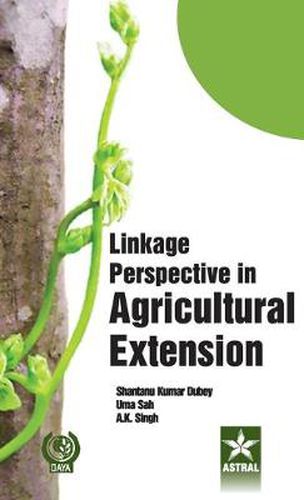Readings Newsletter
Become a Readings Member to make your shopping experience even easier.
Sign in or sign up for free!
You’re not far away from qualifying for FREE standard shipping within Australia
You’ve qualified for FREE standard shipping within Australia
The cart is loading…






This title is printed to order. This book may have been self-published. If so, we cannot guarantee the quality of the content. In the main most books will have gone through the editing process however some may not. We therefore suggest that you be aware of this before ordering this book. If in doubt check either the author or publisher’s details as we are unable to accept any returns unless they are faulty. Please contact us if you have any questions.
Development of agriculture and livestock sectors in India has direct implications on country’s overall economic growth. Application of agricultural technologies by the end users is standard yardstick to quantify agricultural development in a given time and space. The book in hand attempts to highlight the all possible dimensions of linkage perspective in agriculture. This include the conceptual framework of linkages, linkage typology and their operationalization, need to evolve organizational linkage mechanism, linkage constraints, factors affecting linkages, etc. Besides, the book also contains the methodology to develop the measuring instrument to quantify the strength of research-extension-farmer linkage. The available knowledge base on various conceptual and empirical dimensions of linkage related issues has been reviewed and synthesized in the meaningful manner in the book. The different socio-personal, psychological, organizational, external and constraining factors are analyzed objectively and statistically. Based on the findings, an empirical model depicting the linkage strength between all three partners and the significant variables predicting linkage strength has been evolved and guideline for effective linkage mechanism has also been suggested. This book will be extremely useful for the extension students, researchers, development practitioners as well as managers of agricultural development in general and dairy development in particular.
$9.00 standard shipping within Australia
FREE standard shipping within Australia for orders over $100.00
Express & International shipping calculated at checkout
This title is printed to order. This book may have been self-published. If so, we cannot guarantee the quality of the content. In the main most books will have gone through the editing process however some may not. We therefore suggest that you be aware of this before ordering this book. If in doubt check either the author or publisher’s details as we are unable to accept any returns unless they are faulty. Please contact us if you have any questions.
Development of agriculture and livestock sectors in India has direct implications on country’s overall economic growth. Application of agricultural technologies by the end users is standard yardstick to quantify agricultural development in a given time and space. The book in hand attempts to highlight the all possible dimensions of linkage perspective in agriculture. This include the conceptual framework of linkages, linkage typology and their operationalization, need to evolve organizational linkage mechanism, linkage constraints, factors affecting linkages, etc. Besides, the book also contains the methodology to develop the measuring instrument to quantify the strength of research-extension-farmer linkage. The available knowledge base on various conceptual and empirical dimensions of linkage related issues has been reviewed and synthesized in the meaningful manner in the book. The different socio-personal, psychological, organizational, external and constraining factors are analyzed objectively and statistically. Based on the findings, an empirical model depicting the linkage strength between all three partners and the significant variables predicting linkage strength has been evolved and guideline for effective linkage mechanism has also been suggested. This book will be extremely useful for the extension students, researchers, development practitioners as well as managers of agricultural development in general and dairy development in particular.